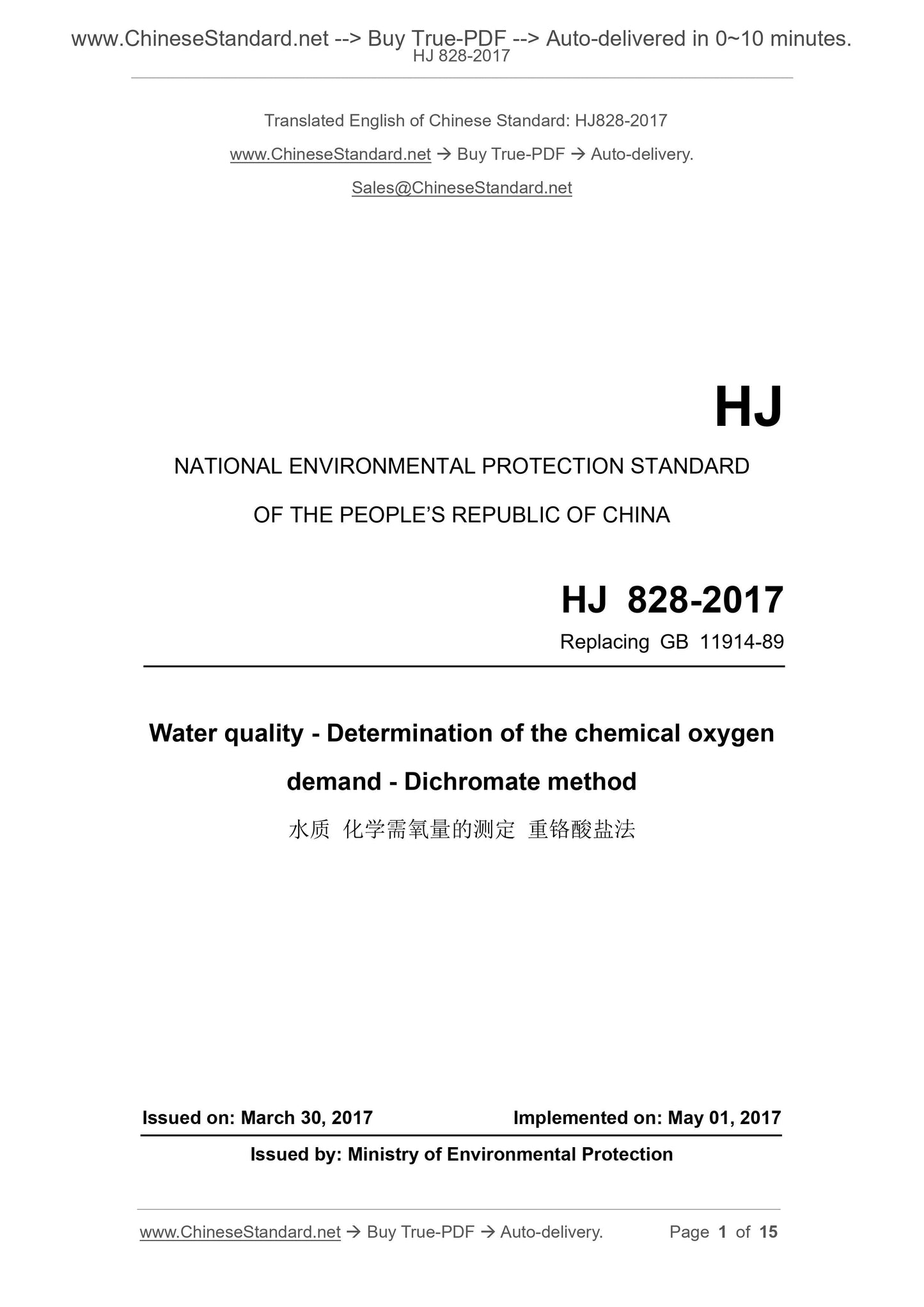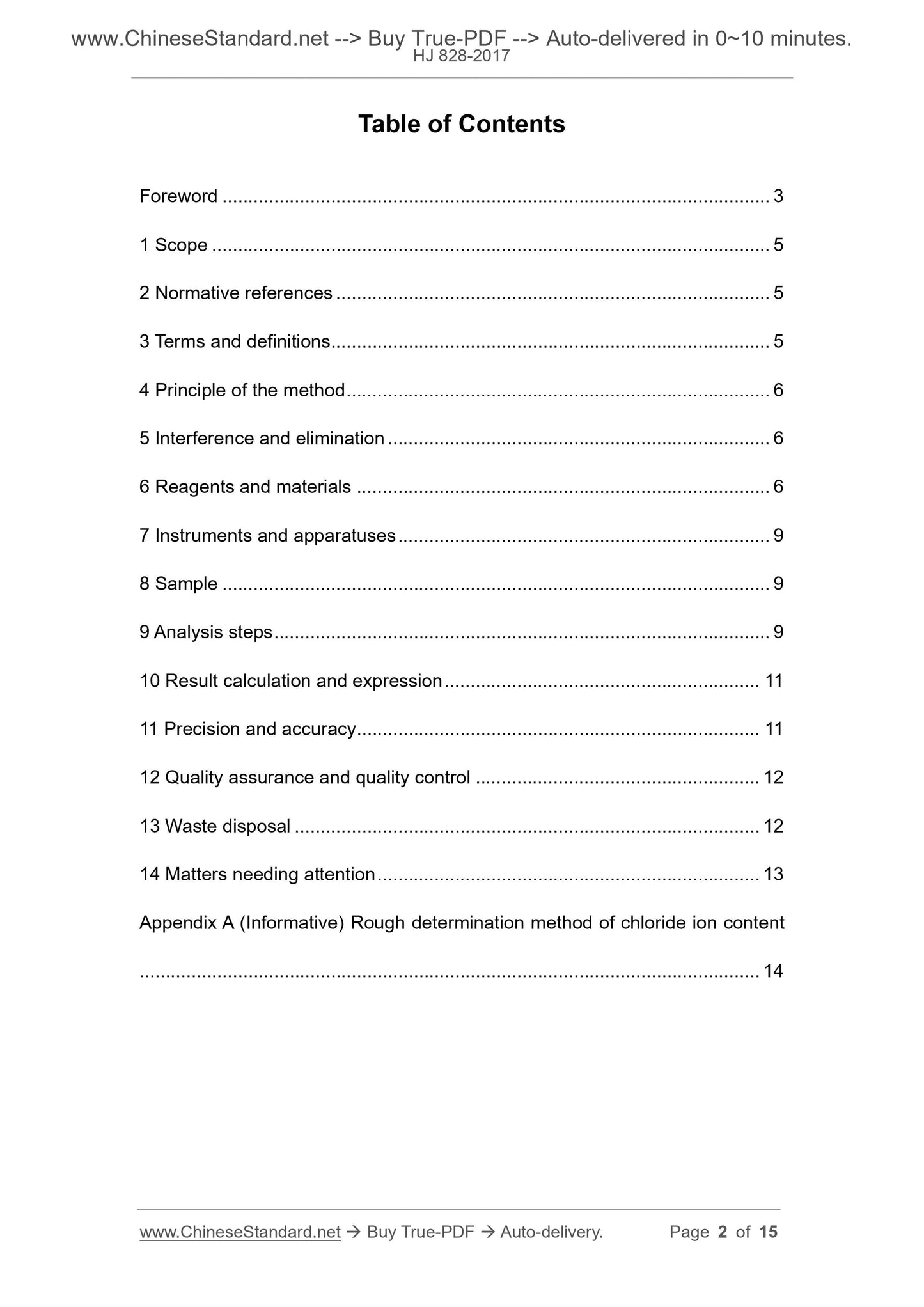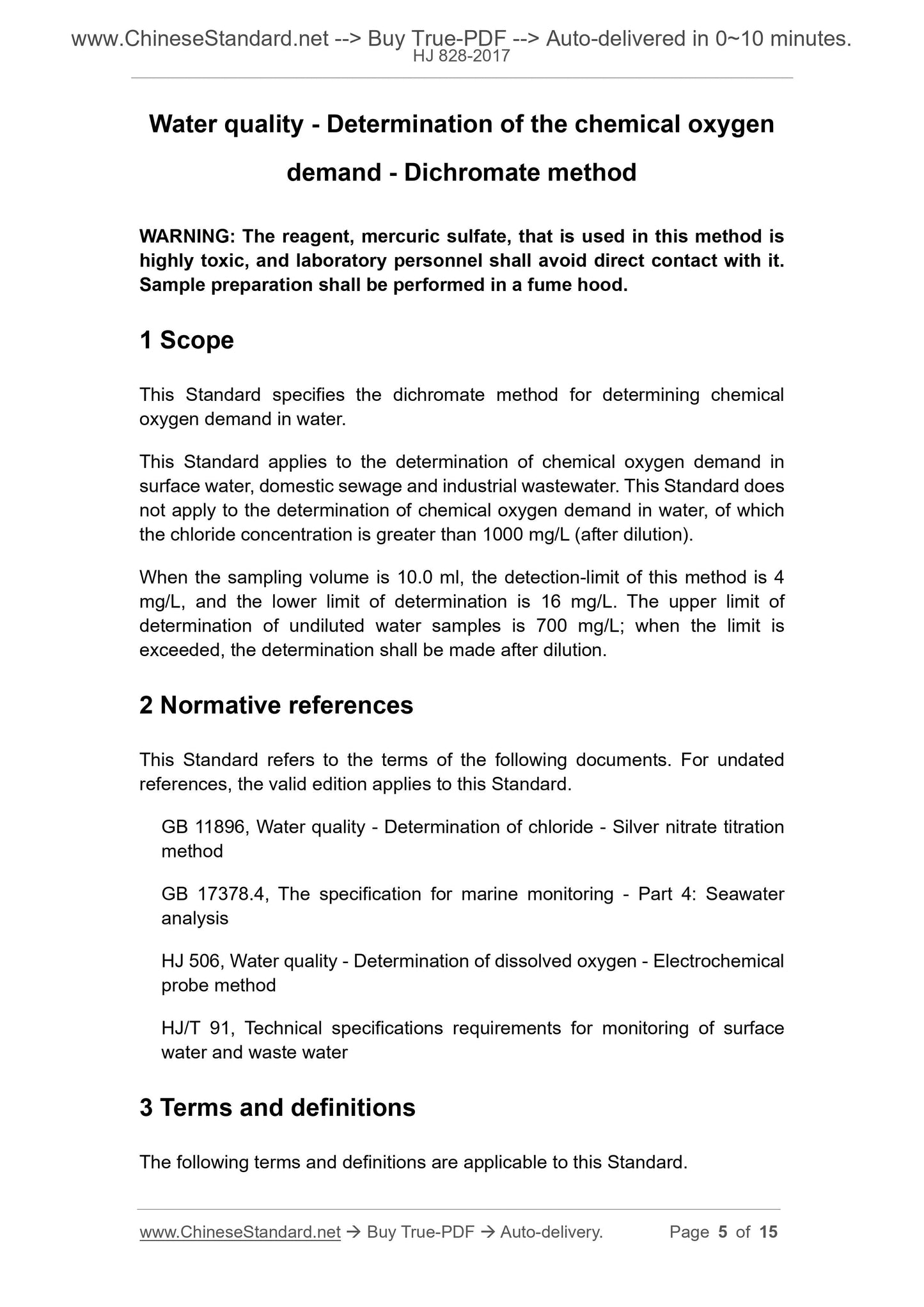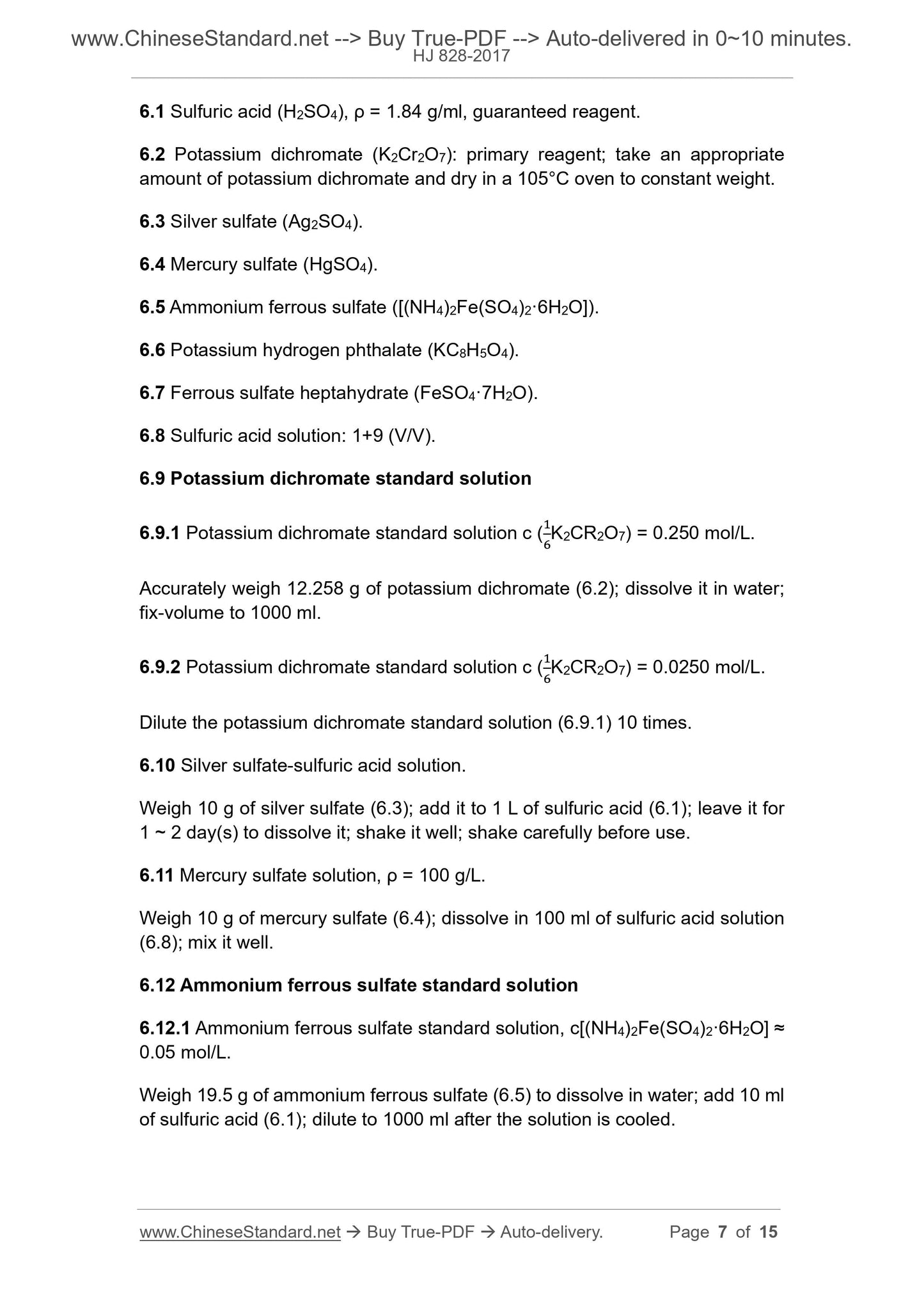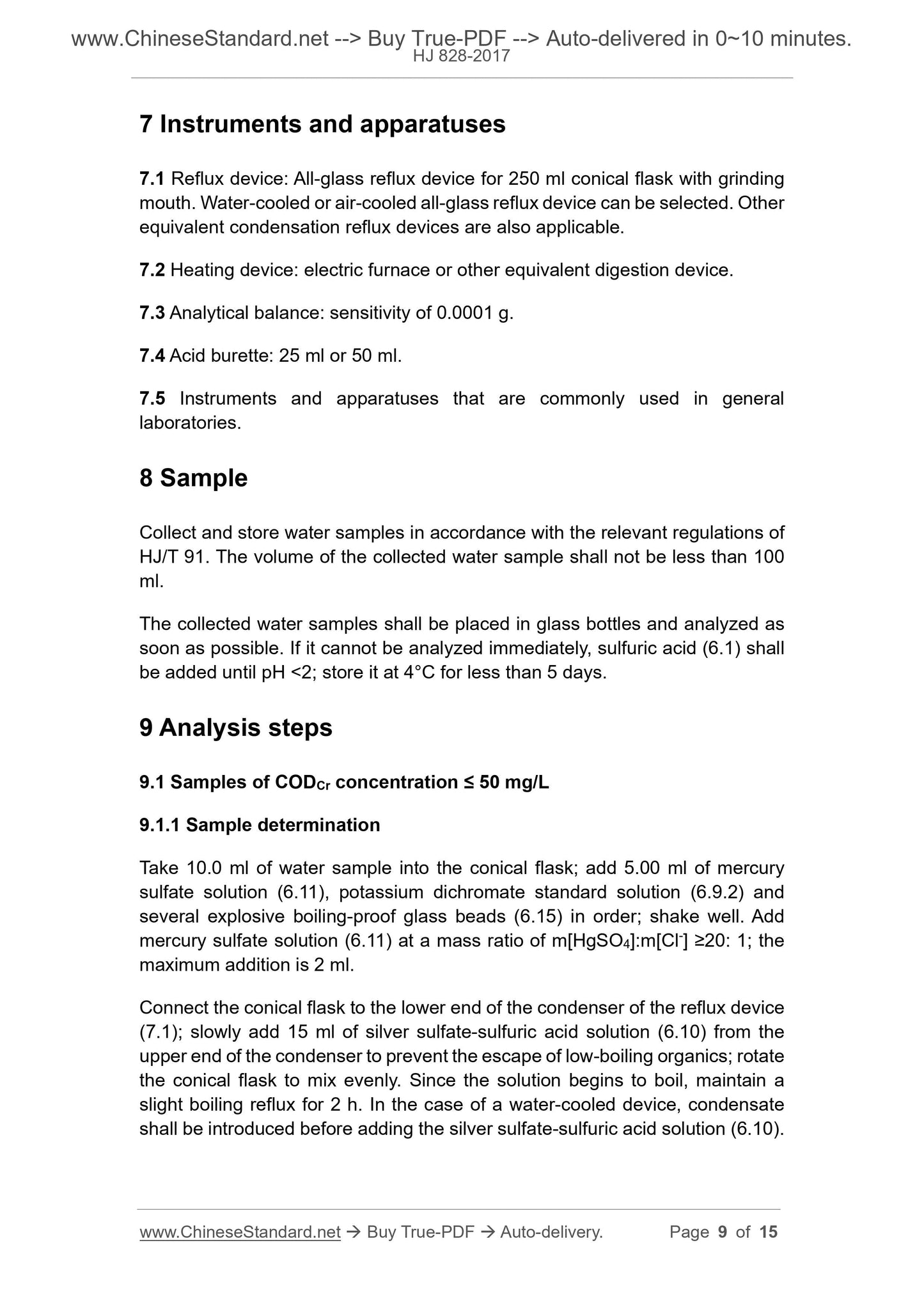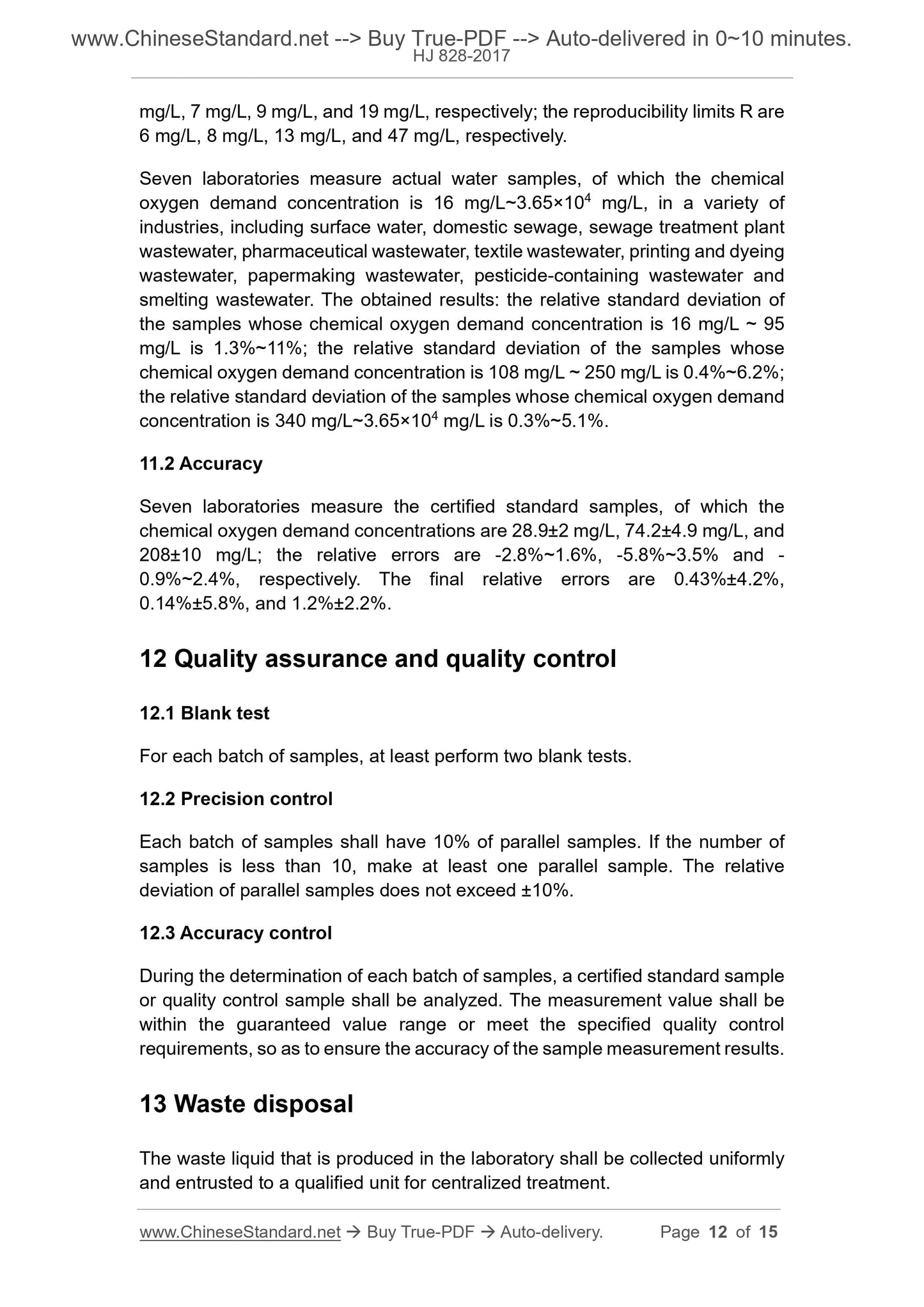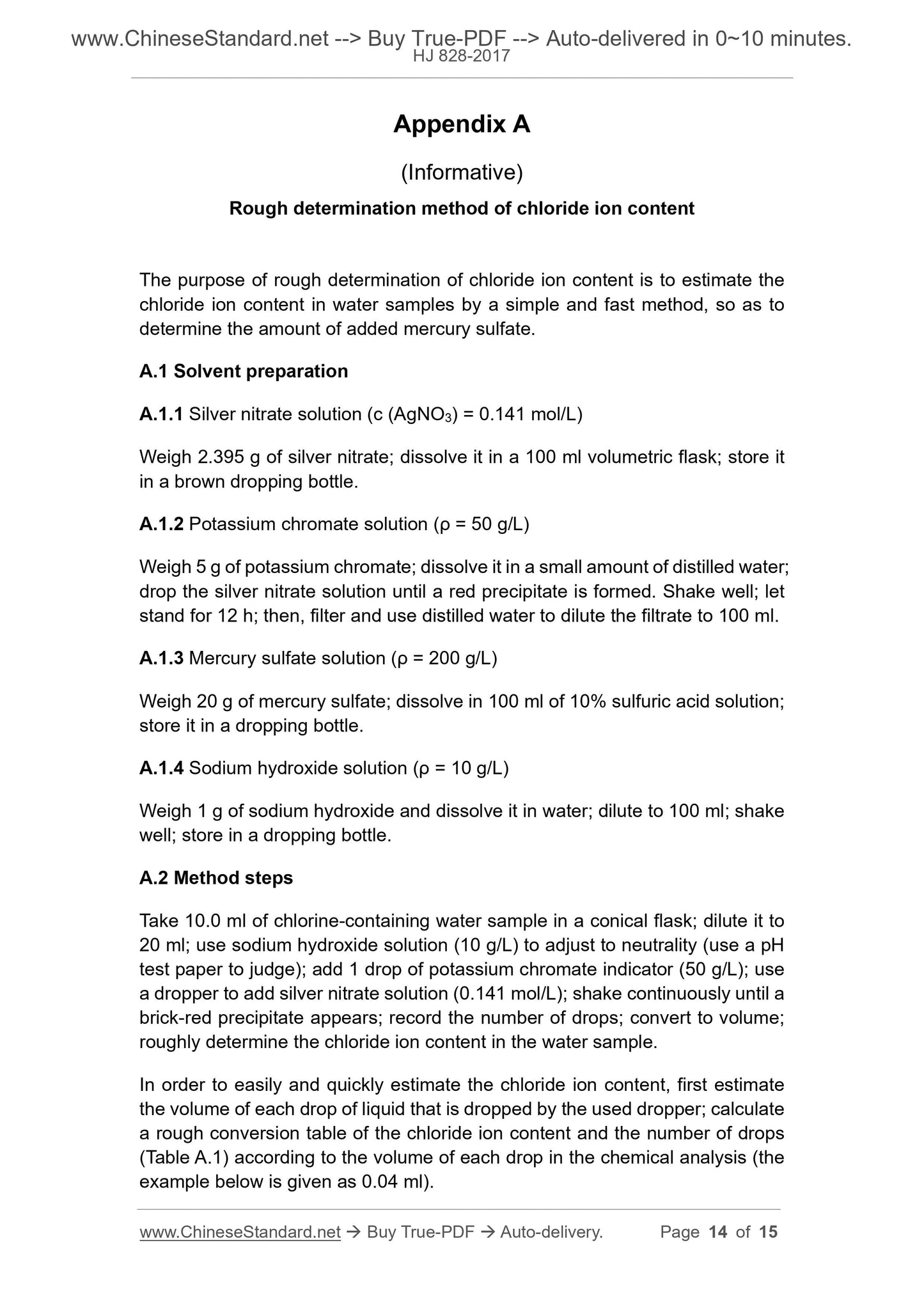1
/
of
7
www.ChineseStandard.us -- Field Test Asia Pte. Ltd.
HJ 828-2017 English PDF
HJ 828-2017 English PDF
Regular price
$105.00
Regular price
Sale price
$105.00
Unit price
/
per
Shipping calculated at checkout.
Couldn't load pickup availability
HJ 828-2017: Water quality - Determination of the chemical oxygen demand - Dichromate method
Delivery: 9 seconds. Download (and Email) true-PDF + Invoice.Get Quotation: Click HJ 828-2017 (Self-service in 1-minute)
Newer / historical versions: HJ 828-2017
Preview True-PDF
Scope
This Standard specifies the dichromate method for determining chemicaloxygen demand in water.
This Standard applies to the determination of chemical oxygen demand in
surface water, domestic sewage and industrial wastewater. This Standard does
not apply to the determination of chemical oxygen demand in water, of which
the chloride concentration is greater than 1000 mg/L (after dilution).
When the sampling volume is 10.0 ml, the detection-limit of this method is 4
mg/L, and the lower limit of determination is 16 mg/L. The upper limit of
determination of undiluted water samples is 700 mg/L; when the limit is
exceeded, the determination shall be made after dilution.
Basic Data
| Standard ID | HJ 828-2017 (HJ828-2017) |
| Description (Translated English) | Water quality - Determination of the chemical oxygen demand - Dichromate method |
| Sector / Industry | Environmental Protection Industry Standard |
| Classification of Chinese Standard | Z16 |
| Word Count Estimation | 12,174 |
| Date of Issue | 4/25/2017 |
| Date of Implementation | 6/1/2017 |
| Older Standard (superseded by this standard) | GB/T 11914-1989 |
| Regulation (derived from) | Ministry of Environment Protection Announcement 2017 [16] |
| Issuing agency(ies) | Ministry of Ecology and Environment |
Share
